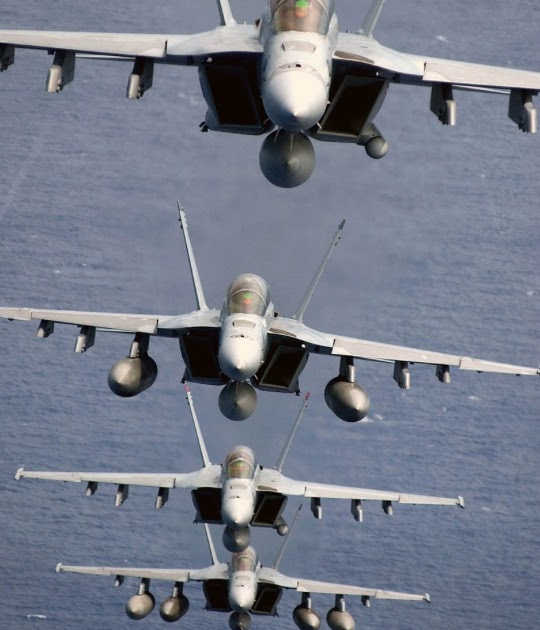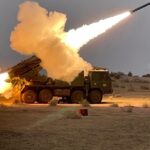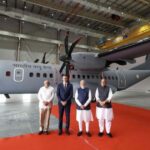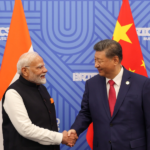
Boeing Reveals Plans to Strengthen India-Making Claims and Continue to Contribute to India’s Indigenous Aerospace and Defense
by Ajai Shukla
Defence News of India, August 25, 2022
Last monthThe Boeing Company’s F/A-18E/F Super Hornet aircraft carrier deck fighter demonstrated its ability to take off from a ski jump, using the standard launch system that the Indian pilots use. The French fighter Dassault Rafale having already proven its capabilities during a similar operational demonstration, these two fighters compete to convince the Indian Ministry of Defense (MoD) that their fighter has the teeth to best meet the defense needs of India.
Speaking to a media gathering in New Delhi, Boeing officials disclosed plans to indigenize components and subsystems, bolstering the company’s claims of manufacturing in India and building on a successful track record. contribution to India’s aerospace and defense ecosystem.
“As part of this effort, Boeing is planning $3.6 billion in positive economic impact on India’s aerospace and defense industry over the next 10 years, with the F/A-18 Super Hornet as India’s next carrier-based fighter. The economic impact would go beyond Boeing’s current obligations and compensation plans in the country,” said Salil Gupte, president of Boeing India.
Boeing already exports a range of defense and aerospace components worth more than $1 billion every year from production lines in India. The company employs nearly 4,000 people in India, with another 7,000 working in its supply chains.
Boeing gets its supplies from more than 300 local companies, a quarter of which are Indian companies.
The company points out that these numbers will increase significantly if India chooses the Super Hornet for its two native aircraft carriers, the Indian Navy Ship (INS) Vikrant and the yet to be sanctioned INS Vishal.
The Indian Navy has tendered 26 fighters, but foresees a long-term need for 57 carrier deck fighters. Of these, eight will be two-seater variants. The two-seater Rafale variant cannot land or take off from an aircraft carrier and will therefore have to be land-based.
“The Super Hornet Block III that we are offering to the Indian Navy has the most advanced and critical capability. Boeing is investing in advanced technologies and capabilities on its Block III Super Hornet and F-15EX today to be ready for the future. The Indian Navy will benefit from these investments for decades to come,” Gupte said.
Boeing says it will also leverage investments made in the Boeing India Engineering & Technology Center (BIETC), which has more than 3,000 engineers and innovators in Bengaluru and Chennai to drive growth and innovation, and advance work. in materials, manufacturing technologies and methods and the “digital world”.
Notwithstanding his commendable job creation figures, Boeing’s central argument is based on that of the Super Hornet operational credentials as the world’s first aircraft carrier deck fighter.
“Designed from its inception as a carrier-based fighter for high-loading, high-stress operations, the Super Hornet Block III will bring next-generation advanced capabilities to the Indian Navy,” said Steve Parker, who oversees bombers and fighters for Boeing. Defense.
The Indian Navy is learning the ropes of the aircraft carrier from the US Navy, which is widely regarded as the world’s premier exponent of aircraft carrier operations.
A Joint Indo-US Working Group on Aircraft Carrier Technology Cooperation (JWG-ACTC) leads cooperation in aircraft carrier design. It has operated for more than a decade to optimize cooperation. The group is looking at ways to improve the efficiency of the Indian aircraft carrier, such as getting fighters to take off quickly (the rate of generation of sorties), the best way to get planes and weapons on deck, the type of catapult the carrier should have, its arresting gear, and how the systems interoperate with Super Hornets flying off a US carrier.
If the Super Hornet is selected, other components can be installed on an aircraft carrier to improve interoperability with other US Navy systems. These include a precision landing system called Magic Carpet which is built into the Super Hornet as a standard capability and is designed to help the pilot land on an aircraft carrier.
Magic Carpet greatly reduces pilot workload. In the normal course, a the pilot woulde about 300 corrections to the landing gear in about 15-18 seconds. This is reduced to a third with a magic carpet. Even the toughest night landings start to feel benign. Boeing claims to have shown it to the Indian Navy as part of its operational demonstration – it is so precise that it engages the third wire every time, causing wear on that single wire.







